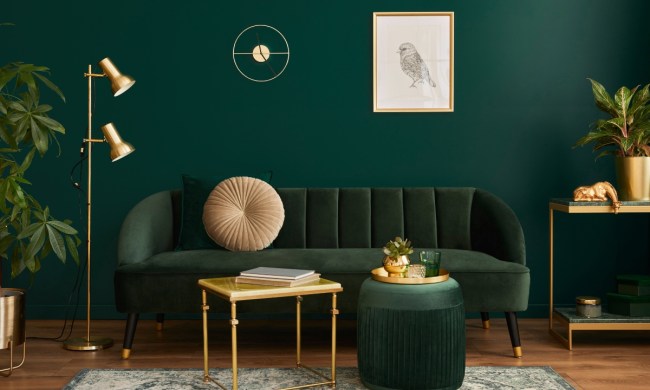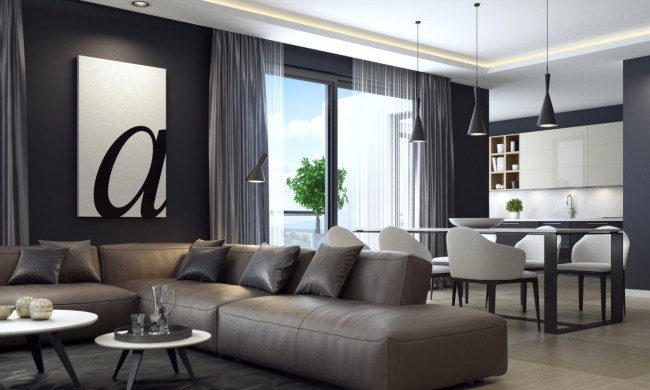If you practice feng shui—the ancient Chinese practice of balancing the flow of energy through a space—you know the big areas of focus are the kitchen, front door, and bedroom. While the living room may not be on the top of the list, a poorly arranged, chaotic living space can cause unnecessary stress and anxiety. According to feng shui, people are affected by how their surroundings are placed and presented, so following some basic Feng Shui living room rules can have you on your way to feeling all the positive energy.
While some of the rules have to do with furniture placement—Feng Shui art for the living room, incorporating the five elements, and how the space is laid out (tall, unsalted ceilings, where the fireplace is located)—not everything can be changed or renovated. There are some easy things you can incorporate, however, to make it more functional.
 The five elements
The five elements
Using feng shui in interior design begins with incorporating its five basic elements: wood, water, fire, earth, and metal. If you’re new to feng shui, the elements are important to incorporate into every room of the home. Wood represents creativity and growth; water elements bring spirituality and peace; fire represents passion and leadership; earth is a grounding force that makes one feel sturdy and strong; metal denotes clarity and logic.
You can bring these elements in with wood furniture pieces, candles, metal lamps, plants, pottery, and by using certain colors in your paint and decor.
Furniture placement
Placing the back of your sofa against a window is a major no-no in Feng Shui. According to its experts, doing so will interfere with the flow of energy in and out of the home. It also means you are literally turning your back to nature and the outdoors. When placing furniture, make sure you’re not going out of your way, getting from one place to another. Convenience is most important, so if that means you need to break another rule (like not placing a sofa under a beam), so be it.
If you can avoid it, don’t have a walkway behind your sofa (or don’t use it), as it promotes bad things happening to you.
Make sure you can see the front door
People naturally become anxious and nervous when they cannot see a door, according to the rules of Feng Shui. People need to see if someone is entering their home, and there needs to be a quick escape if necessary. Therefore, all living room furniture should be placed so that a person sitting on it can see the front door.
That being said, do not place your sofa so that it’s directly facing the front door. An easy solution is to place your sofa elsewhere in the room. You can also put another piece of furniture in between to avoid it altogether.
 Hang positive artwork
Hang positive artwork
To attract positive energy into your living space, you should decorate the walls with images that promote positivity. Feng Shui says you should avoid artwork that brings negative emotions like sadness, despair, or anger. Instead, consider landscape portraits, flowers, animals, or pictures of people smiling and gathering. All are good choices for your living room walls.
Some who practice Feng Shui feel using mirrors on the walls will reflect the art that inspires this positivity. Others believe mirrors can amplify the negative energy brought into your home by others. This one comes down to personal choice.
While there are many more than the four rules listed above, if you want to ensure you are benefiting from Feng Shui, these will get you on your way to creating a more balanced energy space. The living room is a place to gather, connect, and be social. Practicing the advice above will hopefully create a more positive place to spend your time, leaving you in a better physical and mental state.
Unlike the bedroom, which prefers “Yin” energy to bring tranquility and peace, the living room prefers “Yang” energy so you can connect and share with loved ones, creating an environment where all will feel welcome. The sky is the limit when decorating, so have fun and enjoy the experience.
 The five elements
The five elements Hang positive artwork
Hang positive artwork


